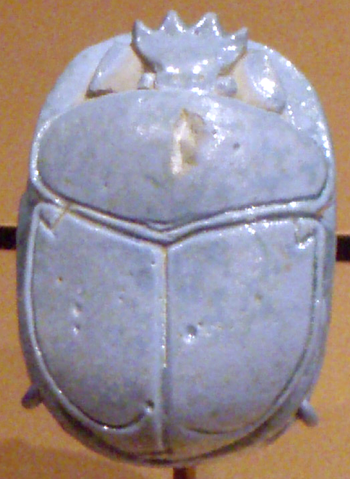Developed around 4,000 BCE, Egyptian faience is a glaze, or a coating used to color, decorate or waterproof an item, which is typically fused to a ceramic body through firing. Before the discovery of a process to produce glass, Egyptians used glazing to produce containers (see figures below). They combined silica (SiO2), lime (CaO), and soda (Na2O) to form their glaze. During drying, the lime, soda, and impurities move to the surface. When fired above 800 °C a glassy crust forms which ‘cements’ the piece together. The impurities provide color, while the lime protects the piece from the atmosphere. In addition, the lime, when combined with silica, lowers the melting point of silica so that firing at above 800 °C allows the glassy crust to form.

It took about 2,500 years to move from glazing to completely glass containers, which seems like a really long time when you consider that the primary raw material for glass, silica, is very readily available. It is just sand. In the next section, we will take a look at why it took so long for humankind to begin producing glass.
